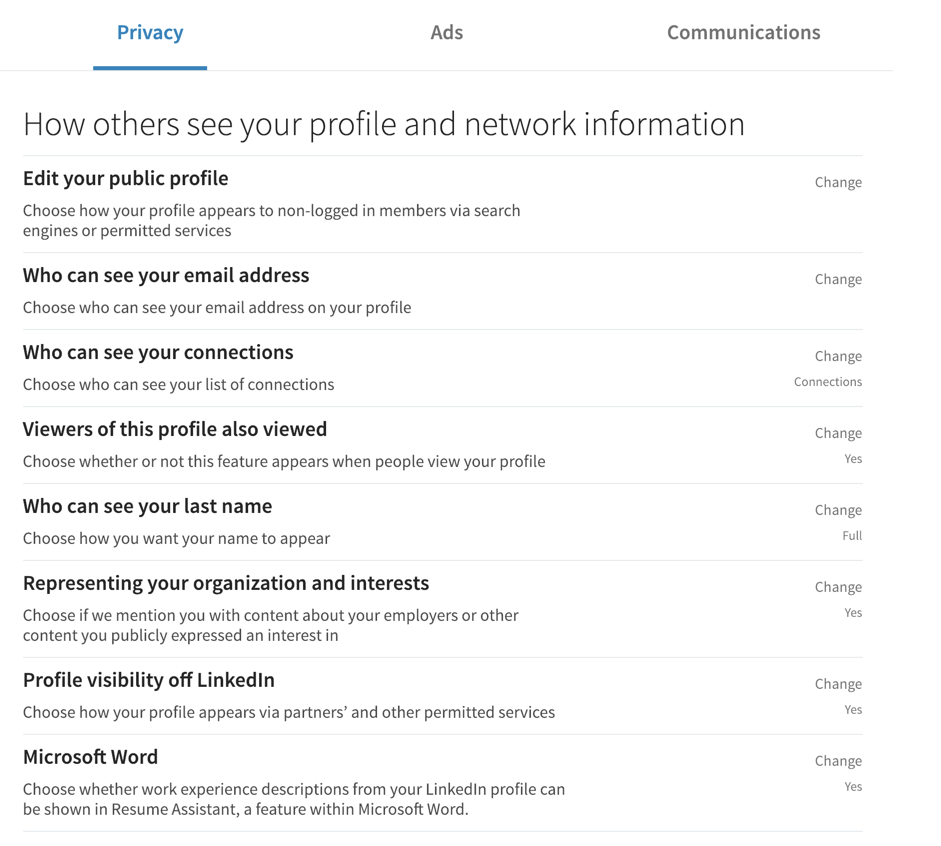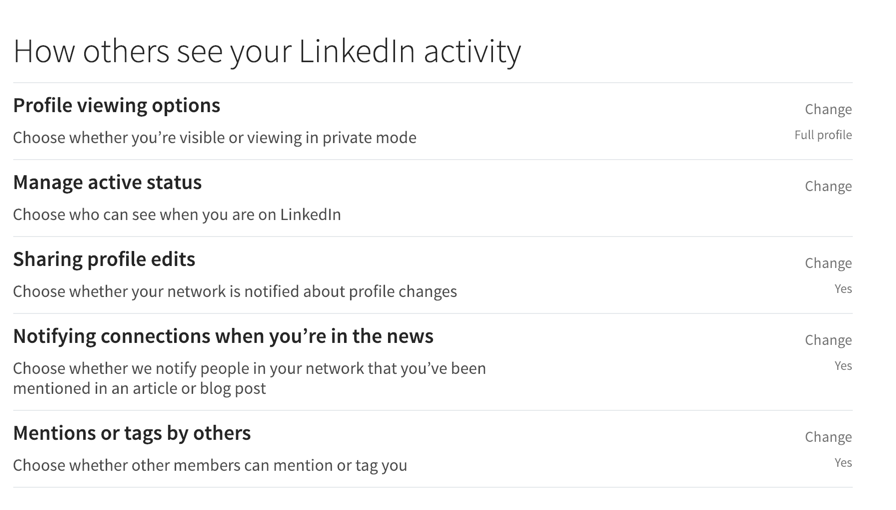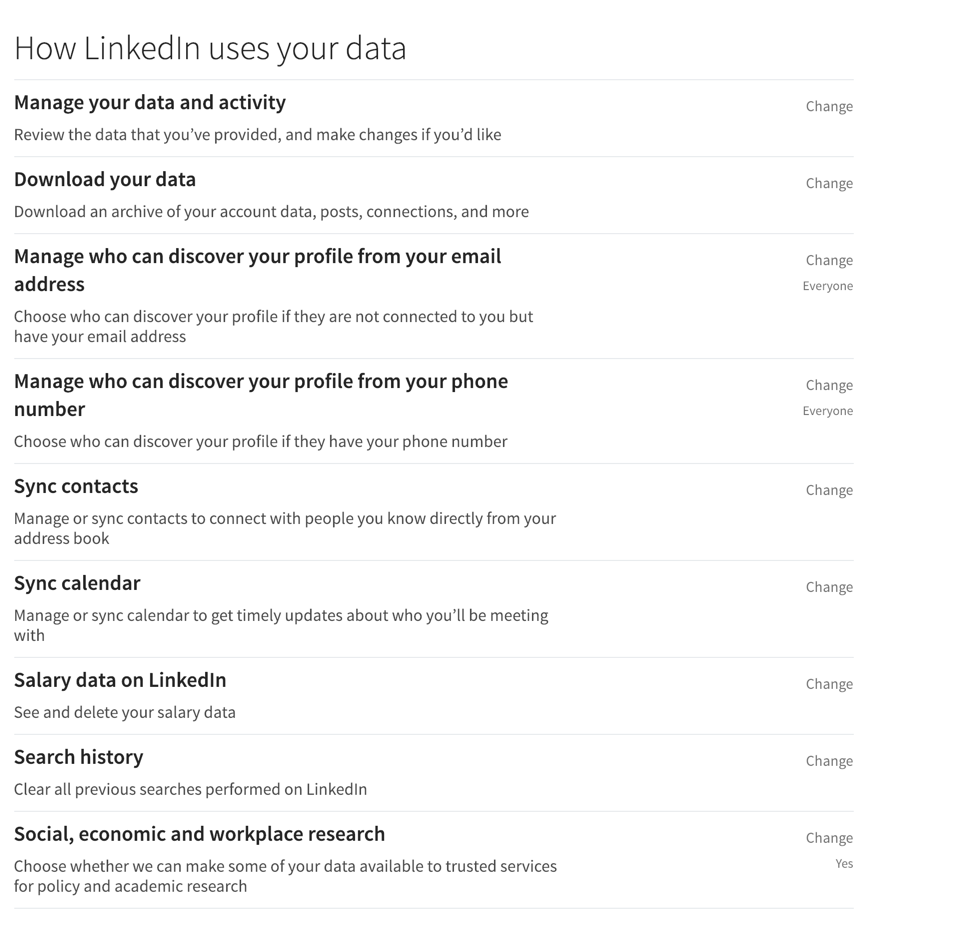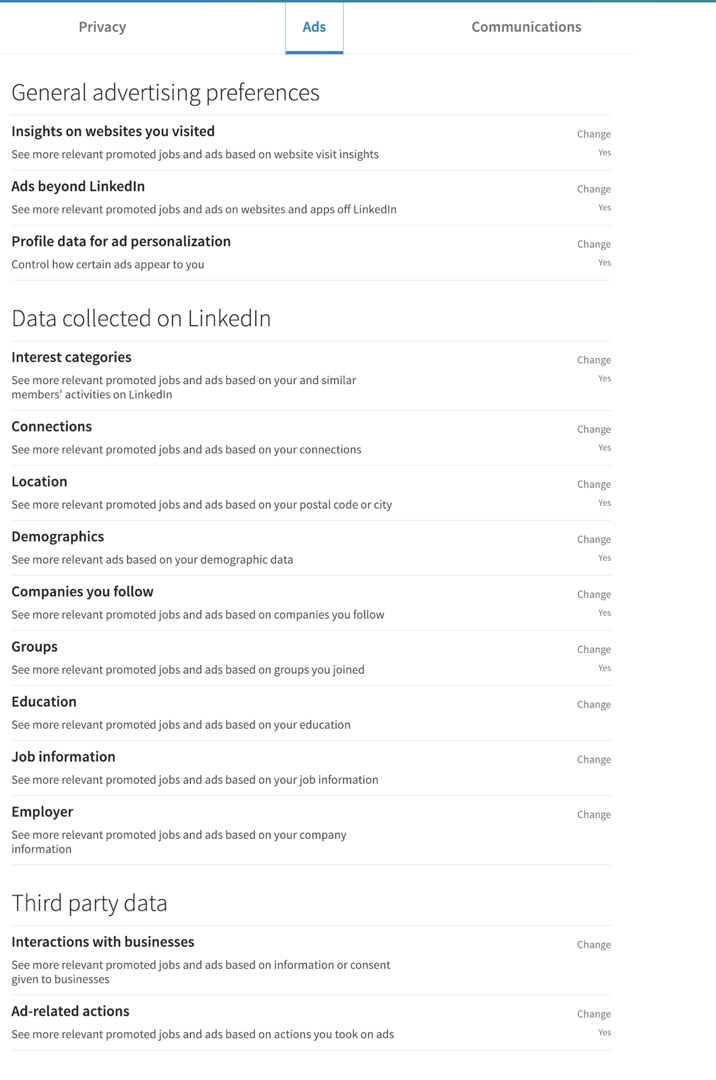I’m sure you’ve probably heard Mark Zuckerberg talk about how they are giving their
users the choice when it comes to privacy. That they’re putting privacy in the hands of you, the user. That you’re in
control of what you want to share and with whom you want to share it.
It’s a lie.
Lie is harsh? Fair enough. Let’s call it misleading.
Control Center
I’m on LinkedIn and recently I decided to go through the privacy options for my account…





And these were just about Privacy. Then we have an entire tab for Advertising, and one more for Communications

I’d consider myself a tech-savy person who cares about their privacy, so I probably would take the time to go through all this and try to configure everything. Do you think though that that is something that your everyday user would do? Most likey not, which leaves them in the vulnerable position of relying on what the default options are. And guess what? At times these aren’t trying to favour your privacy but maximise the return on your data.
And just so it’s clear, I’m not singling out LinkedIn. Fortunately I deleted my Facebook account years ago, but I’m guessing that it’s somewhat in the same league.
We should be favouring simplicity
Giving users a command center which at times feels more complex than an plane’s cockpit, allowing them to toggle 50 different options to indicate exactly what data they want to share, is not the way we should be defining interfaces if we truly care about our users privacy. We should be making it extremely simple for them to do this, and defaulting to sharing as little as possible.
And yet what we’re seeing in the industry is a move to more fine-grained control of what exactly we want to be exposed to as a user, whether this
is privacy settings or the cookies we want to receive.
We disguise this under the pretext of being transparent, yet what we’re really trying to do
is harvest as much personal information as possible and then tell users (or authorities if they come knocking), that you’re in control.